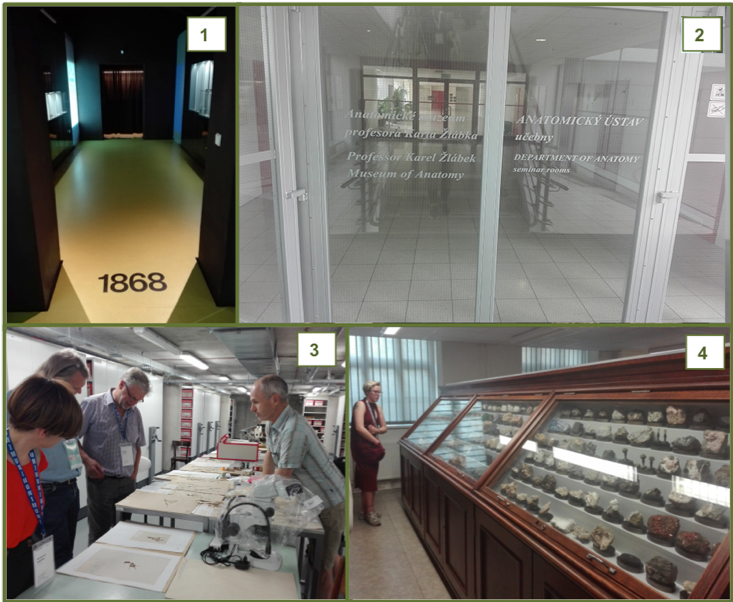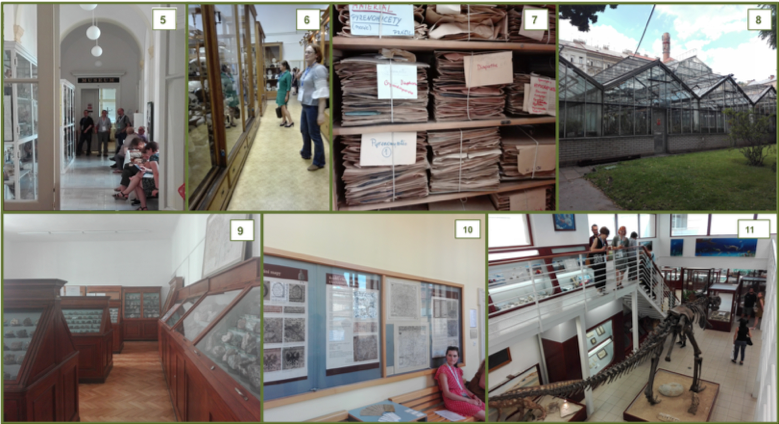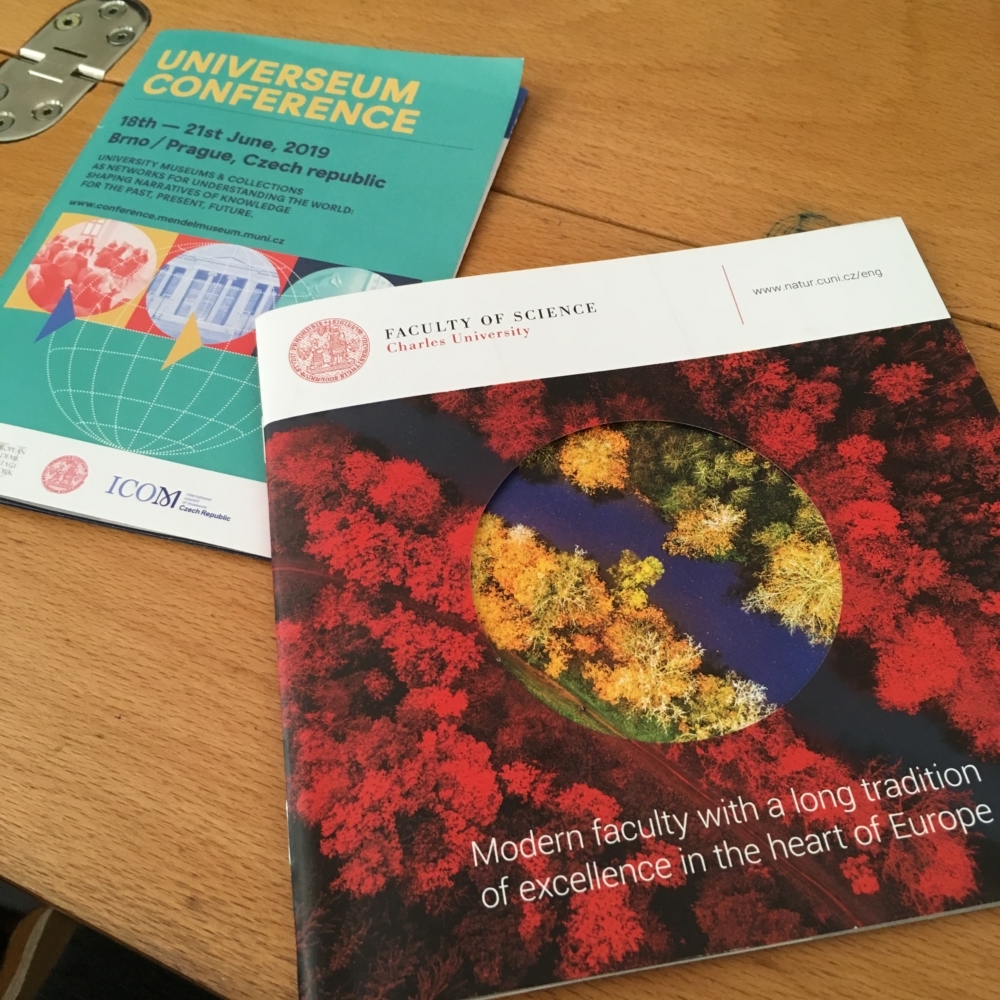A JOURNEY THROUGH TIME. VISITS TO UNIVERSITY COLLECTIONS in BRNO AND PRAGUE DURING UNIVERSEUM 2019
by Sofía Juan Muñoz (University of Seville)
I will begin the entry by introducing myself: My name is Sofía Juan Muñoz and I am a first-year PhD student at the University of Seville, working on the collections and museums of my university. This has been my first time attending Universeum, and I can say that it has been an experience that I would undoubtedly like to repeat next year.
In this blog post I will make a tour of the different collections and university museums that we have visited in the Czech Republic, in particular at Masaryck University (Brno) and Charles University (Prague).
Museums & Collections of Masaryk University (Brno)
In Brno we were able to visit the collections of Masaryk University such as; the Mendel Museum (picture 1), the headquarters of the Universeum Congress; the Museum of Anatomy (picture 2); the herbarium (picture 3); and the collection of paleontology and mineralogy (picture 4).

The Mendel Museum collection focuses on the life and research of the father of genetics, Gregor Johann Mendel throughout the nineteenth century. The anatomy collection with more than 1000 specimens and in constant development, dates from the 20th century. And the herbarium collection began in the year 1921 out of the merger between the private herbariums of Prof. Josef Podpěra and Prof. Heinrich Laus (Olomouc).
In this sense, one of the themes of Universeum 2019, about how new digital media help us to interpret the academic heritage can be observed in a very clear way on the web that the MUNI maintains giving access to the collections (https://www.em.muni.cz/) where you can make visits in a virtual way, and thus travel through the different rooms, including the Mendel Museum or the Anatomy Museum.
Collections & museums of Charles University (Prague)
In Prague, we visited a total of eight collections of Charles University. The Institute of Anatomy of the first Faculty of Medicine Charles University (picture 5) is formed by several rooms which were very well equipped and with plenty of curiosities on the shelfs like the collection of german skulls, or the specimen of sea unicorn.
The Stomatological Museum of Jan Jesenský offers a photographic and material route across the pathologies, treatments and instruments about this medical specialty specifically dedicated to the mouth. Hrdlička Museum of Man (picture 6) is a museum dedicated to science of man (anthropology) and dates from 1937 and in it we can find even mummies!
The head of the herbarium collections (picture 7) Patrik Mráz introduced us to the history and work that takes place there. Founded in the last quarter of the 18th century, this herbarium is considered one of the top 10 according to the herbal index. This collection contributes to developping a wide range of scientific activities in ecology, biogeography, floristry or paleoecology. In this point I remembered Georgina Mcdowall’s lecture on “Museums and Climate change: University museums as part of a migration network” and how, through the university museum, she tries to raise society´s awareness of this problem.
The Botanical Garden and Geological Park (picture 8) opened in 1898 and gradually expanded to include an arboretum, greenhouses, etc. The collection is visited annually by about 100.000 people. We also visited our second Mineralogy Museum (picture 9) in Czech Republic that contains more than 22000 specimens and more than 2000 are exhibites in the display cases.
During our visit to The Map Collection of Faculty of Science department of geopraphy we had to adopt some collections management rules to preserve the collection such us covering our shoes and leaving our luggage outdoors. The collection consists of 130000 maps, 3000 atlases, 85 globes , 10000 monopraphies; and periodicals, photos, etc.
At the end, we travelled across time in the Chlupáč Museum of Earth History, a museum that exhibits the periods of the earth with fossils, specimens and didactic models.

In general, we were able to experience directly how the collections are used for visitors, but in some cases, such as the university herbarium of Charles University, there is still much to be done in this direction. It was clear from our visits that self-learning in the university collections is still the standard in the work methodology, as Nathalie Séjalon-Delmas told us in the presentation “A museum project based on Self-Learning”.

